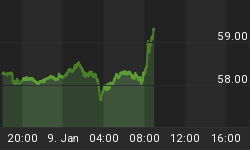With the global economy reeling, millions of jobs permanently destroyed, and more than half a million people dead, it’s hard to find anything positive about the Covid-19 crisis. Congressional Research estimates that the pandemic will contract the global economy around 6% in 2020 and inflict long-term damage by impairing international economic, trade, and political relations between countries. The energy sector has been having it rougher than most, with oil and gas demand falling off a cliff and some experts fearing that it may never fully recover.
The silver lining, though, is this: After multiple false dawns, green energy has now gone mainstream. Although the crisis is delaying some renewable projects, alternative energy spending has held up much better than investments in fossil fuels, and the crisis appears to be accelerating the transition to clean energy.
The Fed and the world’s central banks, however, have continued to bail out struggling oil and gas companies with tens of billions of dollars, putting them at odds with climate goals and risking taxpayers’ money.
Investment Mainstream
For years, green energy stocks underperformed the market as investors associated renewables with a warm moral glow but not necessarily as prime investments mainly due to fossil fuels’ lower costs.
However, things have changed a lot over the past few years, with big advances in renewable technology helping to bring down their costs to a level where they are now competitive with fossil fuels without subsidies.
Between 2010 and 2017, solar and wind generation costs decreased by 81% and 62%, respectively, putting them on par with natural gas and coal.
Indeed, taking the expected economic life of the plant and construction costs--aka the levelized cost of electricity (LCOE)--solar and onshore wind are cheaper than coal and natural gas.
Levelized Cost of Electricity (Dollars Per Megawatt-Hour)

Source: WSJ
Consequently, renewables have been playing an ever-growing role in our energy mix.
The International Renewable Energy Agency’s (IRENA) has reported that new renewable power--principally solar, wind, hydropower, geothermal, and bioenergy--accounted for 72% of new capacity additions in 2019.
At a time when oil demand has fallen nearly 30%, renewables have been bucking the trend by continuing to grow.
Global use of renewable energy grew 1.5% Y/Y during the first quarter, with renewables’ share in the global electricity generation mix jumping to 28% from 26% by the end of 2019, mainly at the expense of coal and natural gas.
It’s hardly surprising that investors are now more willing than ever to back the sector: After years of underperformance, the S&P Global Clean Energy Index has returned 37% over the past two years (including dividends) compared with an 18% gain by S&P 500. The S&P Global Clean Energy Index tracks 30 big utility and green energy stocks.
Meanwhile, the SPDR S&P Kensho Clean Power ETF (CNRG) has gained 70% since its October 2018 launch, while the Invesco Solar ETF (TAN) is up 13.4% in the year-to-date and 80% since the beginning of 2019.

Source: S&P Global
Solar and wind are now mature technologies that provide predictable long-term returns.
However, battery storage has emerged as one of the hottest themes in the sector.
According to the EIA, operating utility-scale battery storage power capacity in the United States more than quadrupled from 2014 (214 MW) through March 2019 (899 MW). The organization projects that utility-scale battery storage power capacity could exceed 2,500 MW by 2023, or a 180% increase, assuming currently planned additions are completed with no current operating capacity being retired.
Related: OPEC+ Is Still Producing Too Much Oil
UBS estimates that the United States energy storage market could grow to as much as $426 billion over the next decade.

Source: EIA
Government Bailout
Last year marked a critical turning point for green energy, with central bank heads from the United States and Europe speaking with one voice and acknowledging the risks of climate change.
U.S. Fed Jerome Powell acknowledged that the Fed has a role in fighting climate change and said that economies must ensure they are “resilient and robust” to the risks of climate change.
Related: Gold Soars To 7-Year Highs
Christine Lagarde of the ECB vowed to make the subject of climate change a mission-critical priority.
Meanwhile, former Bank of England chief, Mark Carney, talked about the need to create a “new financial system” to safeguard against the financial threats of climate change.
Yet, their respective governments have not exactly been averse to pumping billions of dollars into the beleaguered oil and gas sector during the Covid-19 crisis.
The Fed’s balance sheet has swollen by $3 trillion this year as it continues to buy up loans and bonds of companies to save them from collapse. A report by U.K.-Based think-tank Influence Map has estimated that the Fed could end up buying nearly $20 billion in bonds from the U.S. oil and gas sector.
The ECB’s bond-buying spree has been decidedly greener than the Fed’s; however, a report by Greenpeace reveals that the ECB has injected a staggering €7.6 billion into fossil fuels, or more than a quarter of the corporate bonds worth almost €30 billion it has purchased during the ongoing bailout.
Never mind that fossil fuel debt has been some of the worst-performing, with the credit rating scores of energy bonds having declined 13% since 2015.
The bottom line? Central banks are wary of overstepping their limited mandates and keen to avoid taking action that could be viewed as activism. Until the proper legislation is enacted that directly gives them the power to act, central banks are wont only to continue paying lip service to climate change.
By Alex Kimani for Oilprice.com
More Top Reads From Safehaven.com:
















